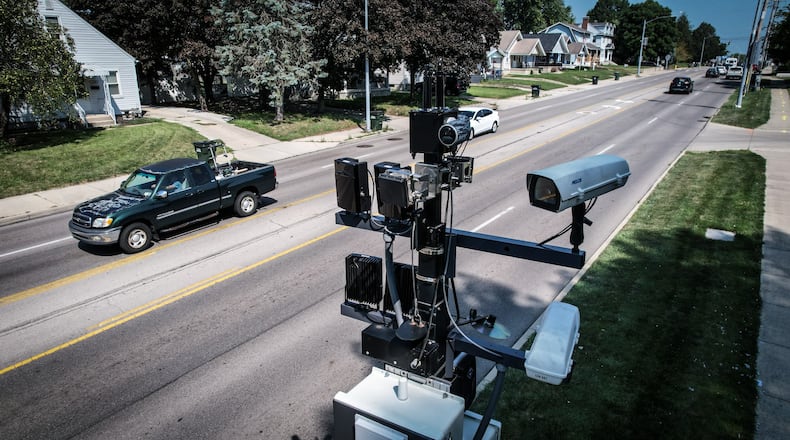“The goal of the photo enforcement program is to reduce crashes, fatalities and protect our residents and visitors from aggressive and dangerous drivers,” said Toni Bankston, a city spokesperson. “There is no current determination on any specific changes or modifications to the current program.”
Additional reductions to the county’s Local Government Fund distribution will come on a monthly basis to any locale that collects fines through an automated traffic camera program, according to the Ohio Department of Taxation.
“Only the local authority that operated the traffic law photo monitoring device is impacted,” said Gary Gudmundson, a state tax department spokesperson.
Money reduced from the city’s portion of the local government fund is redirected in two ways, according to Gudmundson.
Reductions that resulted from traffic camera fines collected in non-school zone areas are credited to the state’s highway and transportation safety fund. These shifted funds must go toward the public safety and roadway safety within the transportation district that serves Dayton, Gudmundson said.
Fines collected in school zones are still paid to Dayton, but for school safety purposes, according to the state tax department.
Dayton reported to the state that 25% of the fines it collected were in non-school zones.
The penalties come after the Ohio Supreme Court last year upheld a 2019 law permitting the state to financially punish cities that cite motorists for speeding and red light violations they catch on tape using automated cameras.
The law requires cities and jurisdictions that operate automated red-light and speed-detection cameras to report their revenues from fines to the state.
The state can reduce local government allocations by the same amount that communities collect in fines from the use of automated traffic cameras, according to the traffic camera reduction law.
A county’s local government fund is distributed based on a formula that uses the population and assessed value of properties in each municipality. Montgomery County’s budget commission — which consists of the county auditor, treasurer and prosecutor — approves these distributions.
The county received more than $1.7 million in local government funds in August. More than 30% of those funds were allocated to Dayton, according to the Ohio Department of Taxation.
Bankston explained that the revenue collected from the traffic camera fines is subtracted from Local Government Fund distributions for each of the next twelve payments.
The city has collected roughly $2.6 million in traffic fines using the cameras this year, compared to $3.6 million last year, according to Bankston. Revenue generated through these fines was used to cover the cost of equipment for police, including body-worn and cruiser cameras and vehicles.
The city first started installing red light cameras in 2003, and years later it installed roughly eight fixed-site, speed-detection cameras.
The city’s traffic camera program now consists of a dozen mobile speed trailers. The city has posted on its website a list of the locations of all its speed trailers.
The city placed the cameras in school zones and high traffic crash areas “with the goal of reducing accidents in these areas and making the area safer for individuals to travel,” said Bankston.
About the Author

